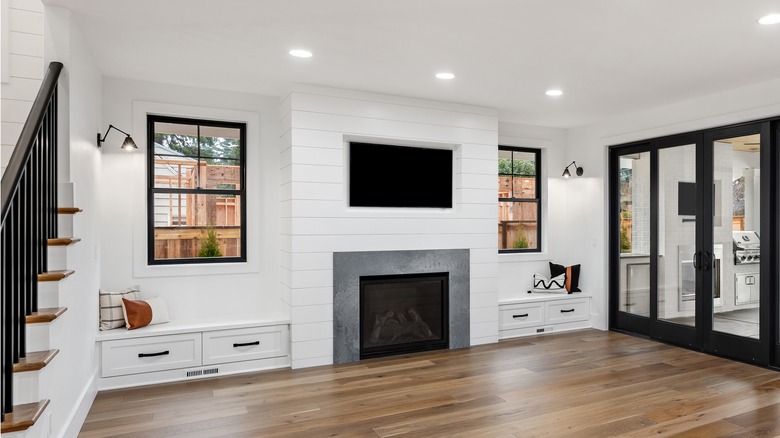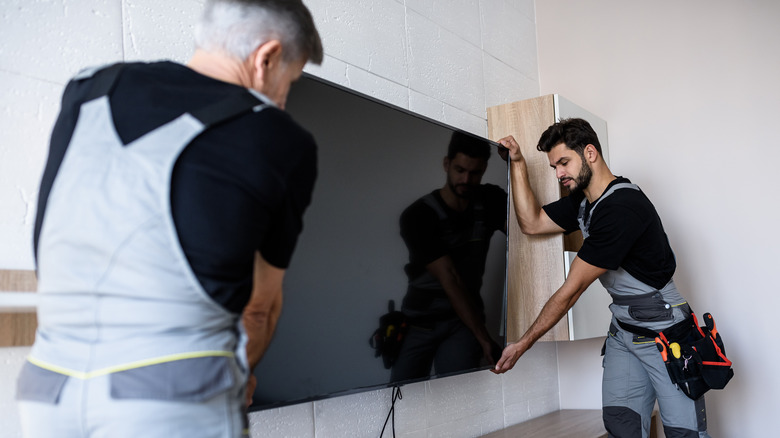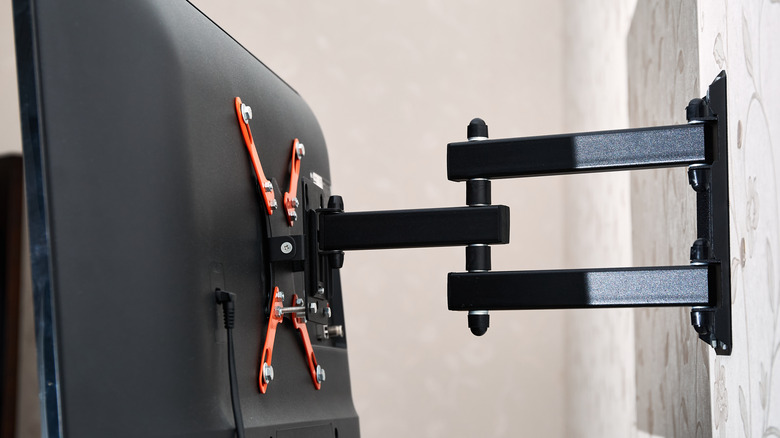Curious About Those Recessed TVs? Here's How You Access The Back Of One
Perhaps you've seen the brilliant design trick to hide your television in style using a recessed TV. Whether you are looking to hide the television inside a wall or to place the TV over a fireplace, using a recessed design is a great way to make the big screen as inconspicuous as possible. However, you may be unsure exactly how to access the back of the television once it's installed, allowing you to attach new cables for gaming or other purposes. The good news is that you often can access the television through the use of a mounting bracket that will swivel out of the recessed box, similar to what you may do with a wall mounting bracket for the big screen. You also may have a fixed mount that does not use a swivel arm, but you can still access the back of the television with either mount.
The recessed TV is a structure that's built into the depth of the wall, allowing the front of the screen to end up flush to the wall. With this configuration, you may be able to place sliding or hinged doors that fit over the front of the screen, so you can hide the television when you aren't using it. As some additional benefits of this setup, you can hide all of the cables and electric cords inside the recessed box. Hiding cables is not always easy to do when you simply have a wall mount setup.
Removing a recessed TV from the wall with a fixed mount
With many recessed TVs, the big screen sits on a fixed mount that's hidden even further in the wall behind the television. In a case like this, you would need to lift the set upward to loosen it from the bracket to be able to access the back panel for connecting cables. Start by firmly grasping the top and bottom of the television and pulling the bottom forward while supporting its weight. You should have a second person available to help you. Some brackets also have a lock of sorts helping to secure the TV that will need to be undone. Then, lift the TV away from the wall to access the back.
One reason to use this type of design is that it's easier to hide the cables inside the recessed area with a built-in outlet, creating a clean look around the big screen without cables dangling down. If the recessed area is large enough, you may be able to use the fixed mount to adjust the angle of the screen slightly. Depending on the location of the sitting areas in the room, this could make it more comfortable for viewers. The fixed bracket is a popular design for hanging a TV with or without a recessed area. Fixed mounts have a cheaper cost than the swivel designs, which give you more options for adjusting the angle and positioning of the television.
Pulling a recessed TV away from the wall with a swivel bracket
When you are using a swivel mount, to be able to access the back of your recessed TV, it often will be part of the box that you (or the previous homeowner) placed inside the recessed space in the wall. Often, the box and the swivel mount are bought as a kit. As an added advantage of this configuration, the size of the television should match both the recessed box and the swivel mount. In other words, as long as the television will fit in the recessed space, it will also safely fit the swivel mount that's attached to it.
Another variation you might have is a recessed mount and box in the wall with your TV just very low profile against the wall. In addition to accessing the back of the big screen, the swivel mount is perfect for adjusting the angle of the TV as well as the tilt. In a large media room, you can adjust the screen's positioning to match where people are sitting.
The swivel arms allow you to bring the big screen away from the recessed box and the wall by grasping the edges and pulling forward, which gives you access to the back of the TV. Some swivel arms have a safety clip to hold the arms in place that you'll need to disconnect. Once that is disengaged, it's as simple as pulling the TV forward and away from the recessed space in the wall.


